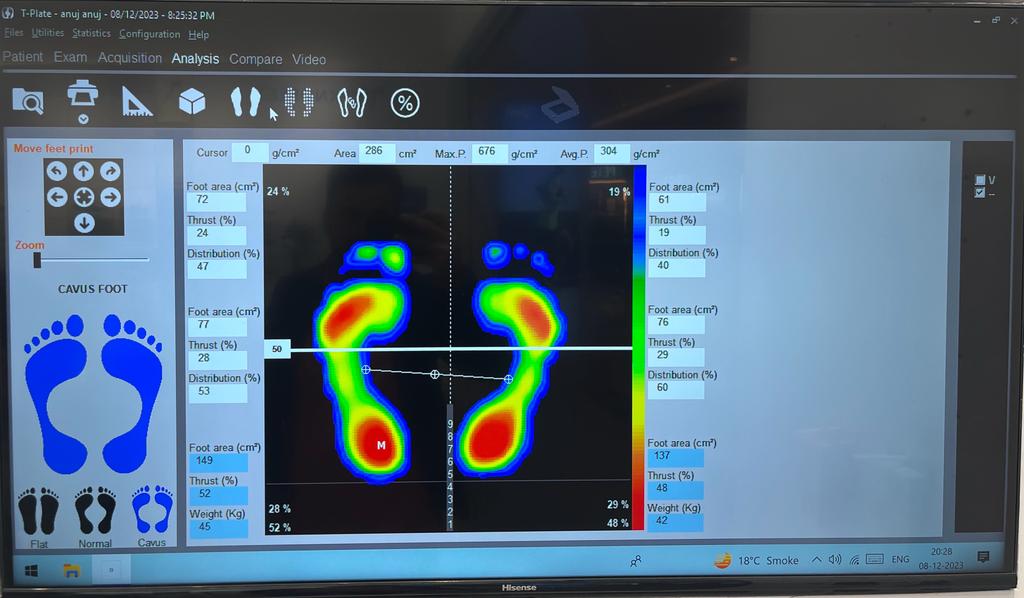Running is a thrilling experience for many, but what happens when the road is met with a high arch, also known as cavus foot? I have started delving into the intricacies of cavus foot and explore the unique challenges faced by runners with high arches.
My Visit to Teknofeet at Airia Mall
I stumbled upon Teknofeet at Airia Mall Sohna Road. The store is equipped with cutting-edge technology for foot analysis. Using their advanced scanning machine, I underwent a comprehensive test to explore the arch of my feet. The results, however, were not as straightforward as I expected, providing different outcomes in two consecutive runs. This discrepancy left me contemplating the possibility of a borderline cavus foot condition.
Cavus Feet Analysis on 8-Dec-2023, Teknofeet Airia Mall

Understanding Cavus Foot and its Impact on Running
Cavus foot, characterized by a higher-than-normal arch, can impact the biomechanics of running. While the scanner at Teknofeet hinted at a potential cavus foot, the nuanced nature of the results underscores the complexity of diagnosing this condition definitively. Nevertheless, individuals with cavus foot often experience unique challenges compared to those with a normal foot arch.
Three Distinct Considerations for Runners with High Arches
1. Reduced Shock Absorption
Runners with cavus foot may experience diminished shock absorption due to the higher arch, potentially leading to increased impact on the joints. Proper footwear with adequate cushioning becomes crucial to mitigate the impact on the feet and lower limbs.
2. Instability and Balance Challenges
The elevated arch in cavus foot can contribute to instability and balance issues during running. Runners with high arches may need to focus on strengthening exercises to enhance stability and reduce the risk of ankle sprains.
3. Customized Footwear Requirements
Unlike runners with normal arches, individuals with cavus foot may require specialized footwear that provides additional arch support and stability. Custom orthotics or insoles can be beneficial in addressing the unique biomechanics associated with high arches.
While my visit to Teknofeet shed light on the potential of a cavus foot condition, the intricacies of foot anatomy and the variability of test results highlight the challenges in definitively diagnosing this condition. For runners with high arches, understanding the distinct considerations and seeking personalized solutions, such as proper footwear and strengthening exercises, is pivotal. Embracing the uniqueness of one's foot structure and taking proactive measures can ensure a smoother and more enjoyable running experience.
